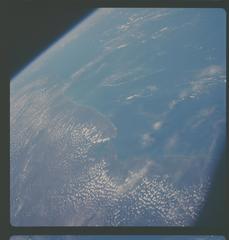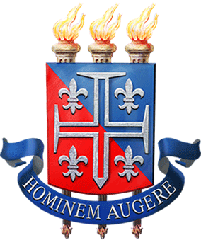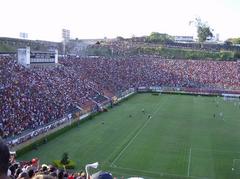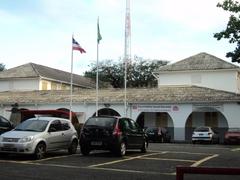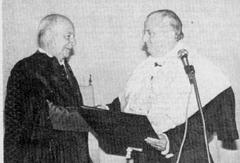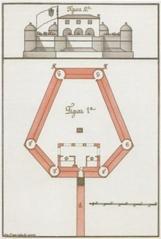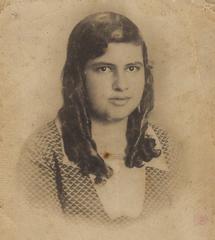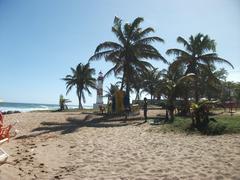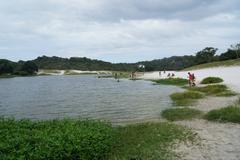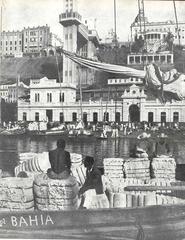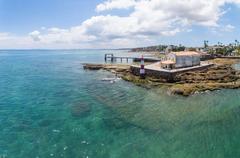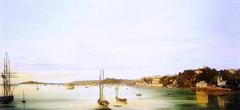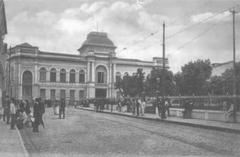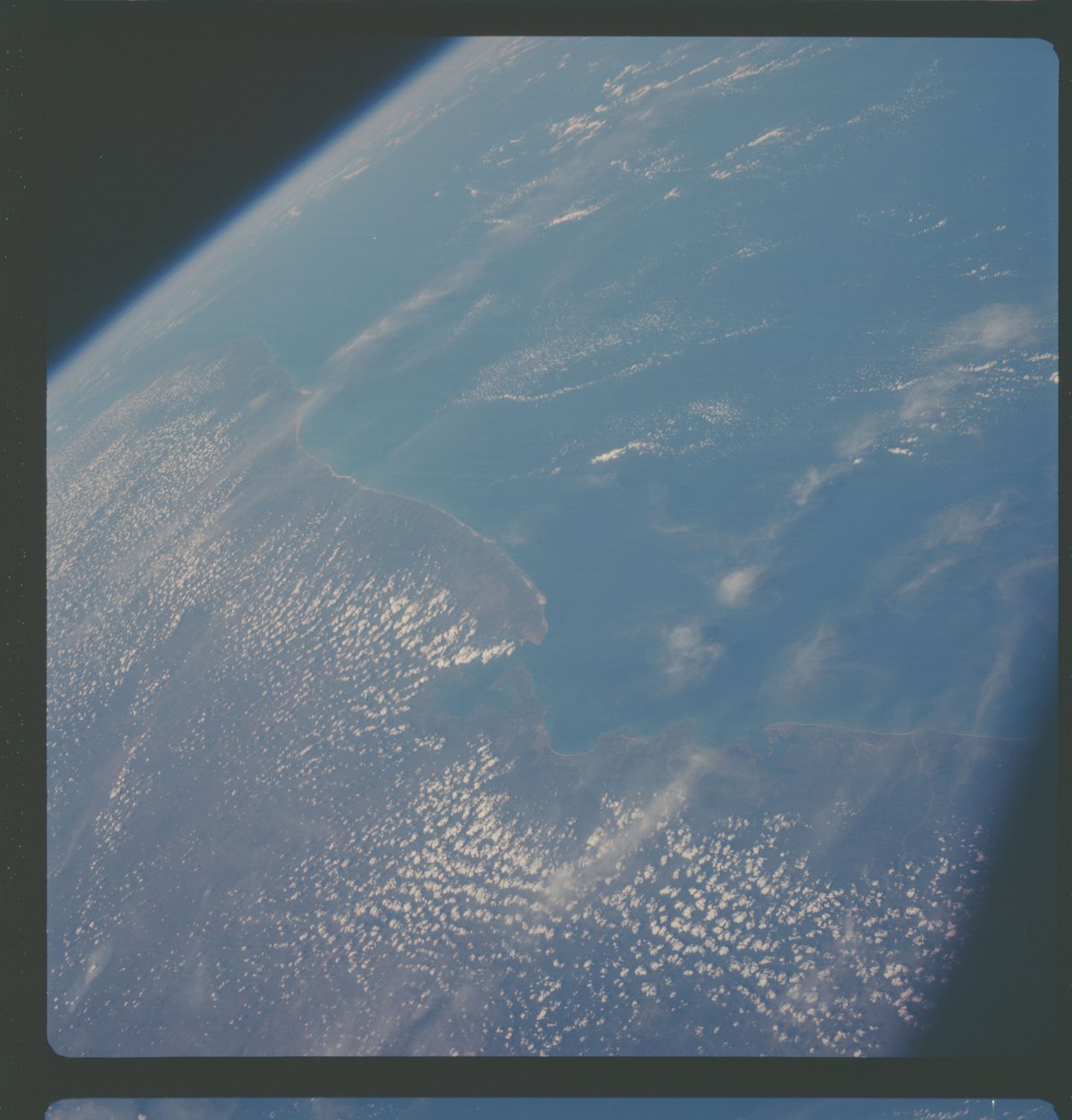
Bay of All Saints Visiting Guide: Salvador, Brazil — Tickets, Hours, and Tips
Date: 14/06/2025
Introduction: The Heart of Salvador’s History, Culture, and Natural Beauty
The Bay of All Saints (Baía de Todos os Santos) in Salvador, Brazil, is not only the country’s largest bay but also a vibrant center of Afro-Brazilian heritage, colonial history, and ecological richness. Encompassing over 1,223 square kilometers and more than 50 islands, the bay is the beating heart of Bahia state. Founded in 1549 as Brazil’s first colonial capital, Salvador’s dramatic coastline, historic neighborhoods, and spiritual traditions make the bay a magnet for travelers seeking an immersive and authentic Brazilian experience.
This guide delivers everything you need for a memorable visit: detailed information on visiting hours, ticketing, accessibility, and practical tips for exploring Salvador’s historical sites, islands, and cultural celebrations. Discover the stories of Pelourinho’s colorful streets, the legacy of Candomblé religion, and the ecological diversity found in the mangroves and reefs. Whether you’re interested in museums, boat tours, world-renowned festivals, or simply soaking up the sunset over the bay, this guide ensures you’re well-prepared for your journey.
Contents
- Introduction: History, Culture, and Visitor Overview
- Historical Significance and Afro-Brazilian Heritage
- Afro-Brazilian Identity and Spiritual Traditions
- Candomblé and the Orixás
- The Iemanjá Festival
- Music, Dance, Art, and Cuisine
- Festivals and Community Traditions
- Museums and Heritage Sites
- Geography, Ecology, and Natural Attractions
- Location, Islands, and Climate
- Marine and Coastal Ecosystems
- Environmental Challenges
- Natural Attractions and Activities
- Key Historical Sites and Visitor Information
- Pelourinho, Elevador Lacerda, Forte de São Diogo, Palácio Rio Branco
- Visitor Experience and Practical Tips
- Getting There, Tours, Accessibility, Safety
- Booking, Costs, Language, and Local Etiquette
- Sustainability and Responsible Tourism
- Connectivity and Facilities
- Visitor Flow and Unique Experiences
- Special Events and Festivals
- FAQ
- Plan Your Visit and Stay Connected
- Sources and Further Reading
Exploring the Bay of All Saints: Cultural Significance and Visitor Experience
Historical Foundations: The Bay as a Cradle of Afro-Brazilian Culture
The Bay of All Saints’ history is deeply connected to the transatlantic slave trade, which brought millions of Africans to Salvador between the 16th and 19th centuries (National Geographic). As Brazil’s first capital and a major slave port, Salvador became the epicenter of Afro-Brazilian culture. Today, over 80% of Salvador’s population identifies as Black or of African descent, making it the largest Black population center outside of Africa (Travel Noire).
Quilombos—settlements founded by escaped enslaved people—flourished on the bay’s islands and coasts. These communities preserved African languages, spiritual practices, and cultural traditions, which remain vibrant today.
Spiritual Significance: Candomblé and the Iemanjá Festival
Candomblé and the Orixás
Salvador is the spiritual center of the Afro-Brazilian religion Candomblé, rooted in Yoruba, Fon, and Bantu cultures. The bay’s waters and islands are sacred, especially to orixás like Iemanjá (Queen of the Sea) and Oxum (goddess of fresh waters). Over 2,000 Candomblé temples (terreiros) operate in the region, with many recognized as national heritage sites (Travel and Tour World). Ceremonies, featuring drumming, singing, and dance, are open to respectful visitors—always seek permission before photographing or participating (Transitions Abroad).
The Iemanjá Festival
Every February 2nd, thousands gather at Rio Vermelho Beach to honor Iemanjá by offering flowers and gifts to the sea, culminating in a vibrant boat procession carrying offerings into the bay (Travel and Tour World).
Cultural Expressions: Music, Dance, Art, and Cuisine
Music and Dance
Samba, axé, and afoxé music—deeply influenced by African rhythms—permeate Salvador’s festivals, especially during Carnival (CNC Travel). Capoeira, a martial art developed by enslaved Africans, is performed in public squares, notably in the Pelourinho district (Travel Pulse).
Visual Arts and Street Murals
The city’s streets are adorned with vibrant murals depicting orixás and scenes of daily life. Cultural centers like Casa do Benin highlight Bahia’s strong ties to West Africa.
Culinary Heritage
Salvador’s cuisine is renowned for African-influenced dishes such as acarajé (black-eyed pea fritters), moqueca (seafood stew), and vatapá (shrimp and bread pudding). Baianas dressed in white serve these foods at street stalls and during religious celebrations (CNC Travel).
Festivals and Living Traditions
Salvador’s Carnival is one of the world’s largest Afro-centric celebrations, with groups like Olodum and Ilê Aiyê leading colorful parades (National Geographic). The Festa de Boa Morte and Saint Barbara Day are other major religious and cultural events.
Quilombo communities around the bay continue to preserve Afro-Brazilian traditions and advocate for social justice (Travel Noire).
Museums and Heritage Sites
- Afro-Brazilian Museum (Museu Afro-Brasileiro): Artifacts and exhibits on slavery, Candomblé, and Black resistance, located in Pelourinho (Transitions Abroad).
- Casa do Benin: Cultural center celebrating Bahia’s African roots (Travel Pulse).
Geography, Ecology, and Natural Attractions
Location, Dimensions, and Climate
The Bay of All Saints is situated on Bahia’s eastern coast, embracing Salvador and dozens of islands. It spans approximately 1,223 square kilometers, with Itaparica Island as the largest (Wikipedia; Britannica). The peninsula where Salvador sits shields the bay from the Atlantic Ocean, while the Paraguaçu River nourishes its ecosystems.
The region enjoys a tropical climate with temperatures between 24–30°C (75–86°F) year-round. The dry season (September to March) is best for outdoor activities (Geographic Guide).
Islands and Coastal Features
The bay includes 56–91 islands, including Ilha dos Frades, Ilha de Maré, and Ilha do Bom Jesus (Bahia.ws). Each island offers unique beaches, forests, and fishing villages.
Marine and Coastal Ecosystems
Mangroves, estuaries, sandbanks, and coral reefs support a diverse range of wildlife. The mangroves are essential nurseries for fish and crustaceans, while coral reefs near the islands are popular for snorkeling and diving (LACGeo). The bay is also home to dolphins, sea turtles, and a variety of bird species.
Environmental Challenges
Urbanization, industrial pollution, and oil refineries threaten the bay’s delicate ecosystems. Conservation efforts focus on protecting mangrove forests and island habitats (Britannica).
Natural Attractions and Activities
- Island Hopping: Regular ferries and boat tours connect Salvador with Itaparica, Ilha dos Frades, and Ilha de Maré (Bahia.ws).
- Beaches: Praia Porto da Barra and Praia do Farol da Barra are popular for swimming and sunsets (Fodor’s).
- Nautical Tourism: Sailing, kayaking, and paddleboarding are widely available (Bahia.ws).
- Diving and Snorkeling: Explore reefs and shipwrecks with local dive operators (Geographic Guide).
- Ecotourism: Trails for hiking, birdwatching, and exploring Atlantic Forest remnants.
- Sunset Cruises: Enjoy spectacular sunset views from boat decks or waterfront promenades (Brilliant Brazil).
Key Historical Sites and Visitor Information
Pelourinho Historic District
- Hours: Open 24/7; museums and churches 9:00 AM–5:00 PM.
- Tickets: Most sites are free or charge a small fee ($2–$5 USD).
- Highlights: Cobblestone streets, Igreja de São Francisco (Baroque interior), Igreja Nossa Senhora do Rosário dos Pretos.
- Accessibility: Cobblestone streets and hills—wear comfortable shoes; limited wheelchair access.
Elevador Lacerda
- Hours: 5:00 AM–12:00 AM daily.
- Tickets: 0.15 USD per ride.
- Highlights: Art Deco elevator connecting upper and lower Salvador, panoramic bay views.
- Accessibility: Fully wheelchair accessible.
Forte de São Diogo and Farol da Barra (Barra Lighthouse)
- Hours: 9:00 AM–6:00 PM.
- Tickets: Free to about $3 USD.
- Highlights: Colonial forts, Nautical Museum of Bahia.
Palácio Rio Branco
- Hours: Weekdays 9:00 AM–5:00 PM.
- Tickets: Free.
- Highlights: Neoclassical architecture, historic exhibitions.
Practical Visitor Tips
Access and Getting Around
- By Land: Taxis, buses, and ride-sharing apps connect Salvador’s neighborhoods to the bay.
- By Water: Main ferry terminals at São Joaquim and Bom Despacho; regular services to major islands.
Guided Tours
Book guided walking tours of Pelourinho or boat tours around the bay for deeper insight. Operators also offer whale watching (June–November) and island hopping (Trip101).
Tickets and Booking
- Most museums and forts: 10–30 BRL ($2–$6 USD).
- Guided tours: Group tours from $50 USD; private tours may cost more.
- Buy tickets online or onsite; advance booking is advised during high season.
Best Time to Visit
- Dry season (September–March): Ideal for beach activities and festivals.
- Carnival and Iemanjá Festival: Expect large crowds and vibrant celebrations.
What to Bring
- Sun protection (sunscreen, hat, sunglasses)
- Swimwear and towel
- Comfortable shoes
- Cash for small vendors
- Camera for sunsets and cityscapes
Accessibility
Main attractions like Elevador Lacerda and Mercado Modelo are wheelchair accessible. Some ferry terminals and cobblestone streets may be challenging.
Safety and Health
- Life jackets are provided on reputable boat tours.
- Stay hydrated and avoid tap water.
- Keep valuables secure in crowded areas.
Language
Portuguese is the main language; English and Spanish guides are available with major operators.
Cultural Etiquette and Sustainability
- Dress modestly for religious sites.
- Ask before photographing people or ceremonies.
- Support local artisans and food vendors.
- Avoid littering and respect marine life.
- Participate respectfully in festivals and Candomblé rituals (Space and Culture).
Visitor Flow and Peak Times
The bay is busiest during Carnival (February/March) and New Year’s Eve, attracting up to 800,000 visitors in a week (Vivitravels). For a quieter experience, visit during April–June or September–November.
Unique Experiences
- Sunset Cruises: Unforgettable views of Salvador’s skyline.
- Live Samba and Capoeira: Some tours feature performances onboard.
- Religious Festivals: Saint Barbara Day (December 4th) and Festa do Bonfim.
Frequently Asked Questions (FAQ)
What are the main visiting hours?
Most attractions and tours run 9:00 AM–5:00 PM, with some (Elevador Lacerda) open until midnight.
How do I get tickets?
Tickets are included in most tour prices and are available online or at embarkation points. Museum and fort tickets can often be purchased onsite.
Are there discounts?
Discounts are sometimes available for children, seniors, or online bookings. Check with operators.
Is the bay accessible for disabled visitors?
Many attractions are accessible, but confirm specific needs, especially for boat tours and island visits.
Can I attend Candomblé ceremonies?
Some ceremonies welcome respectful visitors, but always ask permission and avoid photography.
Is the bay family-friendly?
Yes—calm waters, beaches, and a wide range of family activities.
Plan Your Visit and Stay Connected
Get the most out of your trip by downloading the Audiala app for live ferry schedules, guided tour bookings, and insider tips. Explore our related articles for more on Salvador’s sites and festivals, and follow us on social media for the latest travel inspiration.
Summary and Recommendations
The Bay of All Saints is more than a stunning natural landmark—it is a living testament to Brazil’s history, Afro-Brazilian culture, and ecological diversity. Whether you’re exploring colonial streets, participating in vibrant festivals, or relaxing on pristine beaches, the bay invites travelers of all interests.
Plan ahead with practical information on visiting hours, tickets, accessibility, and cultural etiquette. Engage with local traditions and support sustainable tourism to help preserve this extraordinary region for generations to come.
